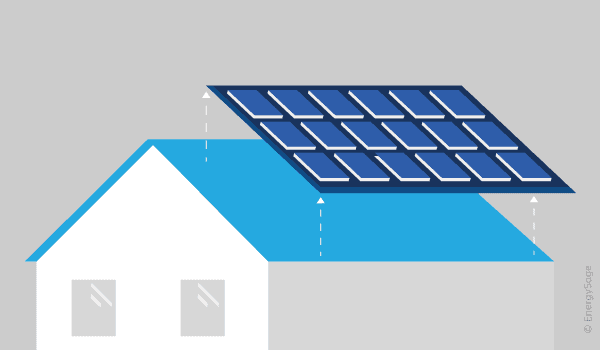Many property owners worry about damaging their roof when installing a solar panel system. These installations will typically last around 30 to 35 years, so it’s important to make sure installing panels doesn’t cause harm to your roof. Fortunately, roof damage as a result of a solar panel installation is extremely rare because installers take precautionary steps while installing panels to prevent leaks and other damage from occurring.
Bill Jones Roofing has not really seen too much roof damage from solar panel installation. Although the industry is still pretty new and we expect to see more damage as more roofs get solar panels installed. Contact Bill Jones Roofing for roof damage or if it is time for a new roof.
Just like any home improvement project, using the right service provider is essential to a rooftop solar job. For most homeowners, installing solar panels will not result in roof damage as long as your solar installer is a licensed, qualified professional and your roof is in good condition. If you hear of roof damage occurring because of a solar installation, it’s likely because the roof was initially in poor condition.
The first step is making sure you’re working with a reputable solar installation company. You can connect with high-quality solar installers is by registering your property on the EnergySage Solar Marketplace. We pre-vet all of our installer partners to ensure that only the best installation companies have the opportunity to provide quotes through our platform. If you are concerned about damage to your roof, you can question your installer of choice about their installation process and measures they take to prevent roof damage using the online messaging center or invite installers out for site visits so they can inspect the roof and answer your questions in person. It’s also worth asking any company about their workmanship warranty, and whether or not it covers your roof on the off chance damage occurs.
How solar panels are installed on your roof
Being concerned about roof damage with a solar panels installation certainly isn’t unreasonable. Putting racking and solar panels on your roof alter one of the core parts of your home’s structural makeup, and there are parts to the installation process that put your roof at risk if done incorrectly.
One of the biggest concerns for property owners is the holes needed in your roof to secure your solar panels. During installation, workers will drill holes in your roof to secure the racking which will hold your panels. These holes are for lag bolts, which secure your panels to your roof, and are designed to withstand extreme weather. These holes and bolts are necessary for almost every solar installation, and their size and depth will vary based on what your roof is made of (asphalt, wood, etc.).
Holes in your roof never sounds great, but there are several safety measures used by solar installers to make sure your roof remains structurally sound and won’t leak at all. To prevent water from getting through the new hole, the bolt fixture will be surrounded by flashing, which is a metal or plastic shield that fits under existing roof tiles. This flashing is then further sealed with tar or similar material. Lastly, the hole where the lag bolt is also filled with a sealant to protect against water seepage in your roof.
Aside from the holes in your roof, a common concern from property owners is the added weight solar adds to your roof. In almost every case, the weight of solar panels will not compromise the structural integrity of your roof – roofs are designed to hold much more weight than might be added with 20-30 solar panels. If you live in a snowy climate, you won’t need to worry about the weight of snow either, because solar panels are typically installed at an angle, allowing snow to slide off.
Solar doesn’t always involve holes in your roof
If you’re still concerned about having holes in your roof to mount your solar panels, there are some less common ways to still benefit from rooftop solar energy. One popular option is to install solar roof tiles or solar shingles, which integrate the electricity-generating capacity of photovoltaics right into your roof shingles and eliminate the need for mounting traditional panels. While this option has many aesthetic benefits, costs are still high and the technology isn’t as efficient as traditional panels.
If you have a flat roof, you won’t need to put holes in it to install solar. Installations on flat roofs commonly use ballast mounting systems. With this type of system, the mounts are weighted down sufficiently to ensure the system remains secured to the roof. Another option to avoid solar on your roof entirely is to install a ground mount, or join a community solar plan and receive solar energy from an offsite location.


